This project represents something I have never done before: building more than one kit at the same time. I tend to be a linear builder. I build one kit at a time, and when it is done I clean up the workbench and start the next one. I have watched many of you build two, three, or more kits at a time, so I thought I would give it a try. I have three 1/72 kits of the Hudson, one from MPM, one from Revell, and one from Italeri. According to Scalemates, all three of these kits come from the same MPM molds. The MPM kit came out in 2006 (my boxing is from 2010), Italeri in 2006, and Revell in 2013. I haven't checked yet, but if all of these kits are the same, the build process should be streamlined. Yeah!
First, a little background for the Lockheed Hudson:
Let me start out by saying that until a few weeks ago I thought the Hudson and the Ventura were versions of the same airplane. I really like the Ventura, and I thought the Hudson was an earlier version. When I started researching the Hudson, I discovered they are very different planes. They are related. The Hudson was so successful that a larger, stronger plane was developed that was based on the Hudson. This newly designed plane was the Ventura.
The Hudson was a militarized version of the Lockheed Model 14 Super Electra passenger plane. In 1937, Lockheed was trying to build interest in their new passenger plane, so they sent diagrams and information about the Model 14 to various aviation publications. They also sent a diagram of a potential light bomber based on the Model 14. The British saw the diagrams and expressed an interest in the light bomber. The British initially ordered 200 planes in 1938, with deliveries beginning in 1939. Only 78 of these airframes had been delivered by the start of the war. Since America was officially neutral at the start of the war, the deliveries took an interesting route until America entered the war. As a way to get around neutrality restrictions, the planes were flown to the US/Canadian border, then towed across the border using tractors and horses, taken to an RCAF base where they were disassembled, loaded on ships, and taken to England. Deliveries continued for some time:
-Mk 1/2: 350 aircraft
-Mk 3: 428 purchased, 380 delivered through Lend Lease
-Mk 5: 450 aircraft
The Hudson was used as a light bomber, a heavy fighter, a photo reconnaissance plane, a trainer, an anti-submarine aircraft, a search and rescue aircraft, for insertion of SOE agents, and several other missions. It was used by the British, Canadians, Americans, and a variety of other countries.
Notable accomplishments of the Hudson:
-First British aircraft operating from the British Isles to shoot down an enemy aircraft (1939)
-Provided top cover for the Dunkirk Evacuation
-Shot down a FW Condor near Ireland (1941)
-Attacked a U-Boat near Iceland. The crew waved white flags to surrender. The Hudson guarded the sub until the Royal Navy arrived to take possession of the sub. Possibly first time a sub was captured by a plane in flight.
-A PBO-1 of VP-82 of the US Navy was the first US aircraft to sink a U-Boat (U-656, SW of Newfoundland).
-In 1942 near New Guinea, an RAAF Hudson was jumped by a flight of 9 Zeroes led by Saburo Sakai. The Hudson battled the Zeroes in a 10 minutes running battle, finally being shot down. Following the war, Saburo Sakai wrote the Australian government and asked that the crew be identified and awarded the highest national military honor for their bravery and skill..
One interesting story concerns a man named Sydney Cotton, who before the war traveled to Germany and other countries and photographed airfields and facilities. After the war started, Cotton convinced the RAF that he could use planes such as the Hudson to do the same thing, this time from the air. For some reason, the RAF wanted to disguise the fact they were creating an air reconnaissance unit, so Cotton's unit was named #2 Camouflage Unit. Officially they were testing new camo schemes for their planes which included the Hudson and the Spitfire. In 1941, this unit was still a secret, and was renamed the Photographic Development Unit (PDU). Their actual purpose was revealed in late 1941, and they were renamed #1 Photographic Reconnaissance Unit. I hope to use one of their creative camouflage schemes on one of my models.
Planning the Project:
I want to build all 3 of these models at the same time using three different paint schemes. Unfortunately, I have more than 3 favorite schemes for the Hudson. I guess it will be a game-time decision which schemes I will use. I have accumulated 3 sets of canopy masks from various manufacturers, as well as a set of generic RAF seatbelts from Eduard. I examined the instructions, and the interior actually looks pretty good. I thought I might be able to improve the pilot's seat, so I designed a replacement on TinkerCad, and then printed my own seats on my 3D printer. I also found some free files to print new propellers, as well as some R1820 engines. The files for these were 1/32 scale, so I had to reduce them to the correct scale before printing. I have a busy weekend coming, so I hope to get this project started on Monday. I want to spend a little time this weekend reading some build reviews of these kits so that I might step over some of the landmines that might be waiting. So, off we go. Cheers everyone.
14 attached images. Click to enlarge.
-
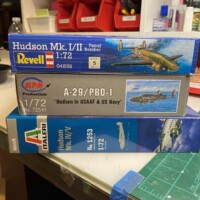
1. My 3 kits. I suspect they might all have the same parts. I also have 3 Airfix Hudson, but I don't want to tackle them now.
-
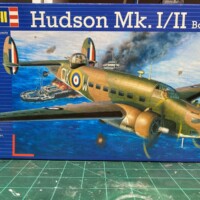
-
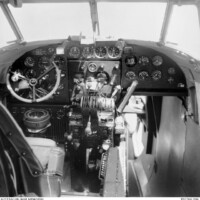
1. Photo from Australian War Memorial. One pilot seat, with a small observer's seat out of the photo to the right.
2. Tunnel to the nose section.
-
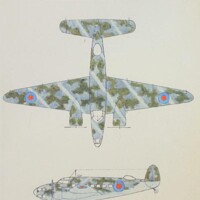
1. Camo for one of the planes in Cotton's unit.
-
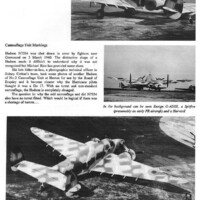
1. Magazine into about plane in Cotton's unit that was shot down because it looked like a Do-17.
-
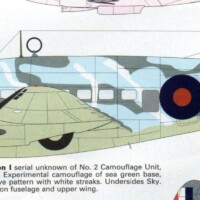
1. Another plane in Cotton's unit
-
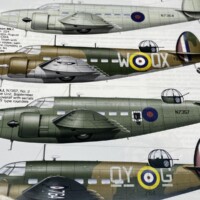
1. Another plane in Cotton's unit. This shows the position of one of the plane's cameras.
-
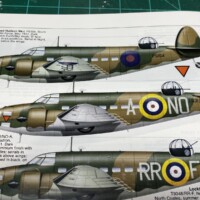
1. Another sideview from Warpaint Series No. 59. I plan to do this plane from the No. 320 (Dutch) Squadron. Notice the Dutch early war insignia on the nose.
-

1. I like both of these Atlantic schemes. More nice artwork from Warpaint 59.
-
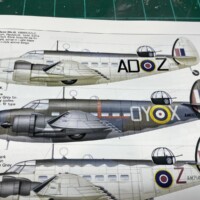
1. More Warpaint 59. I like this scheme. I found a color photo of this plane in flight.
-
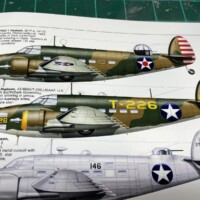
1. More Warpaint 59. I like this American scheme. The spot for the turret would need to be removed.
-
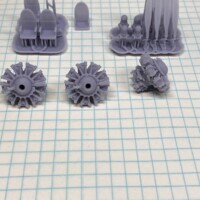
1. The 3D prints I have completed for this build.
-
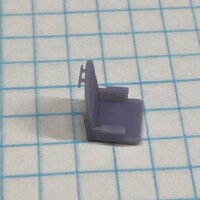
1. The seat I designed. The small piece on the back is for the seatbelts. Photos show the shoulder straps coming over the top of the seat. There must be some mechanism to keep them from sliding down the side of the seat, so I invented this one.
-
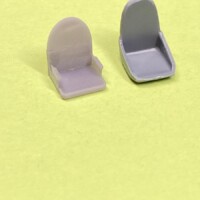
1. Kit seat isn't bad, but just not quite correct.